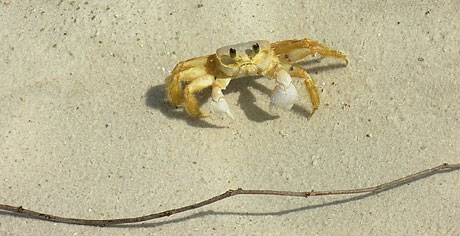


Dance
In the following you´ll find background information about different dance styles I teach within the field of contemporary dance.
Contact Improvisation
In Contact Improvisation (CI) every dancer shares weight with a partner
in a play with gravity. Surprising changes of movement or direction can
happen through playful mutual, unplanned leading and following of our
whole bodies. We learn to find pleasure in the loss of orientation in
space, in out-of-balance-situations, in flying, sliding, and falling,
and learn unknown possibilities about our body in contact.
We learn about the difference in giving and receiving weight or pressure,
and we learn to meet and articulate our limits in a clear bodily communication.
The experiences we gain through the enjoyment of CI and it’s playful
connections with our fellow movers reflect our personal tendencies or
relationship patterns. We can find expanded possibilities in contact with others.
Body-Mind Centering®
Body-Mind Centering® supports our dance through clear body exploration and movement analysis. Through the sensing and feeling of our inner body structures (anatomical facts & learned movement patterns) we discover different movement qualities, which lead us to a very personal dancing style.
Movements initiated from specific body systems or tissues feel different
and do look distinct from each other. Bones, for example, give us a feeling
for structure, organs lead us into deep emotions and three-dimensionality,
lymphatic fluid reflects clarity and boundaries.
These kinds of body journeys increase our awareness of our internal imagery
and often create a refreshing self perception as well as unexpected movement
possibilities and interesting movement material.
Release Technique
Release
Technique integrates experiences from different bodywork techniques
(Klein-method, Body-Mind Centering®, Laban-Bartenieff and others) into
Contemporary Dance technique. It includes an attentive warm-up for the
whole body as well as the development of different movement sequences.
Tensions are reduced and muscles are lengthened and strengthened
through self-massage and diverse exercises. Energetic and structural
connections inside of the body are clarified so that we find inner
support for our alignment and more effortless movement.
The training facilitates a flow of movement, flexibility and coordination.
Creative Children's Dance
Creative Children's Dance classes encourage children to learn the basics
of contemporary dance in a playful and age-appropriate way. Their awareness
of body, space, rhythm and movement quality is developed which facilitates
the child´s individual kind of expression through movement.
The classes aim to support the child’s individual creativity helping
them to transfer their ideas, emotions or stories into dance.
The training strengthens the body, develops coordination and flexibilty
as well as social awareness, creativity, concentration and self trust.
'Movement is essential to every further learning.'
Maria Montessori